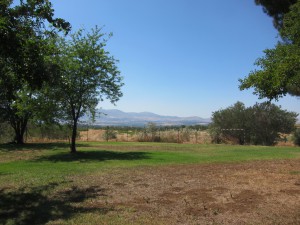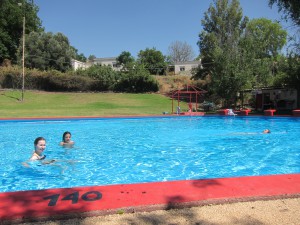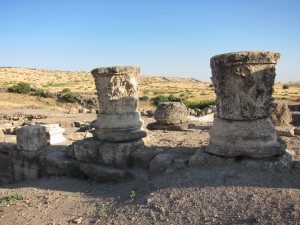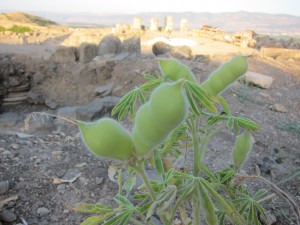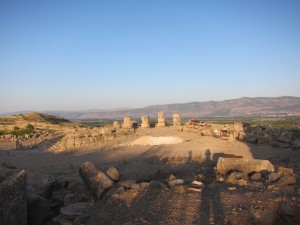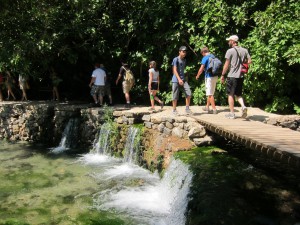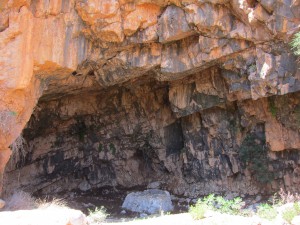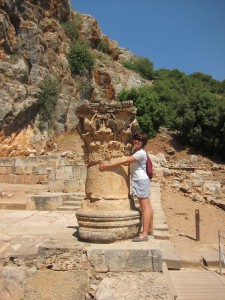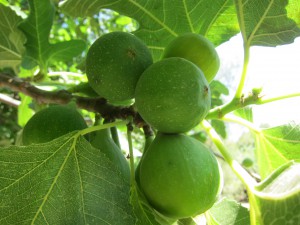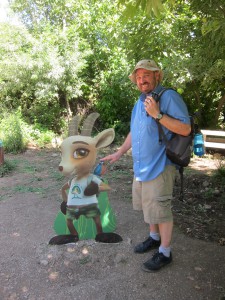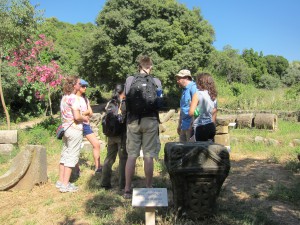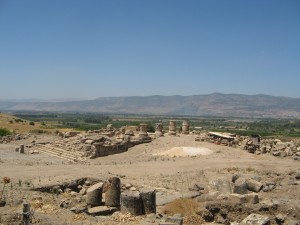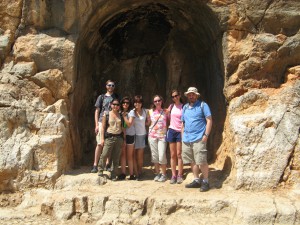When I first heard about this trip, I realized that the image I had of Israel was fragments of political and religious histories. I could hardly construct an overall impression of Israel – if that is at all possible for any nation. So the main expectation that I had was the strong sun, humidity, and gnats. (So far, I have been wrong about this too. The heat and the humidity have been quite forgiving, until Saturday, and the gnats less aggressive that what I thought they would be.) Landing in Tel Aviv and traveling to Kibbutz Bakfar at Kfar Szold have confirmed my preconceived notion that industrialized countries are quite similar. Sprawling along the highway going north were rolling hills that reminded me of the wine country in California. We arrived at the kibbutz on a warm yet breezy night, and these several days at the kibbutz have been very pleasant. In fact, some discomfort in the hot afternoons could hardly shake my satisfaction of the evening atmosphere when we would sit outside on a rather private porch for a slow conversation or for some music (though rather romanticized, think of the breeze and mellow setting of Madeleine Peyroux’s rendition of “Summer Wind”). Although I expect the manual labor in coming weeks to be more intense than what we already have experienced – “yard work” and preparing ours squares for the dig – I have enjoyed the balance of physical exertion in the morning and laziness in the cool water of the pool in the afternoon. We will start our real work tomorrow, and surely that will cure any summer lethargy. (The site and the view from it are amazing, especially at sunrise! Refer to Cathy’s post for pictures.)
[Edit] We traveled to Banias on Friday, to Aterit, Katzrin, and Umm el-Qanatir on Saturday, and to Hippos, Capernaum, and Mount of Beatitudes on Sunday. We just started a full day of work today. More on these trips and our real work in the next post!


